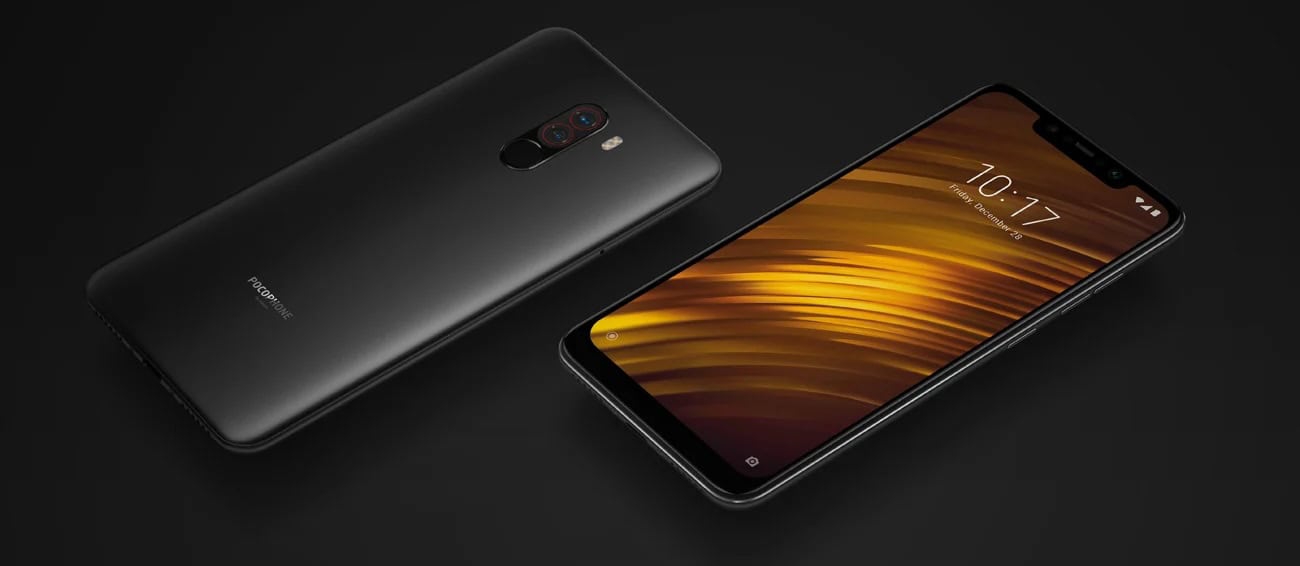In 2018, the smartphone market was shaken by an unexpected newcomer that challenged the established hierarchy: the Poco F1, known globally as the Pocophone F1. A sub-brand of the Chinese company Xiaomi, Poco introduced its first model with an audacious goal — to deliver flagship performance at a fraction of the typical flagship cost. This bold move not only caught the attention of tech enthusiasts but also redefined consumer expectations.
Revolutionary Pricing Strategy
One of the most compelling aspects of the Poco F1 was its pricing strategy. At launch, the device was priced significantly lower than leading flagship models from brands like Samsung and Apple, despite featuring many high-end specifications. The aggressive pricing was a strategic move to capture the attention of savvy buyers looking for power-packed performance without the hefty price tag. By achieving this balance, the Poco F1 effectively democratized smartphone technology, making top-tier features accessible to a broader audience.
Flagship-Level Specifications
Central to the Poco F1’s success was its internal hardware. The device was powered by Qualcomm’s Snapdragon 845 processor, the same chipset used in several premium phones at the time. It came with up to 8GB of RAM and 256GB of internal storage, specifications that were typically reserved for high-end smartphones. Additionally, it boasted a 6.18-inch FHD+ display, a dual-camera system with a 12 MP + 5 MP setup, and a substantial 4,000 mAh battery. These specs provided excellent performance, from gaming to multitasking, further enhancing the device’s appeal.
Innovative Features and Cost Savings
While the Poco F1 did cut some corners to maintain its low price, such as opting for a polycarbonate body instead of glass and metal, it included innovative features that offset these trade-offs. It was among the first in its segment to offer liquid cooling technology, ensuring optimal performance during extended use. Moreover, it ran on MIUI for Poco, a customized version of Xiaomi’s operating system, fine-tuned for performance enthusiasts.
Legacy and Impact
The impact of the Poco F1 on the smartphone industry was profound. It set a new standard for what consumers could expect from budget-friendly devices, pushing other manufacturers to rethink their strategies. The phenomenon demonstrated that high-performance devices could be offered at competitive prices, prompting the emergence of other cost-effective flagship alternatives. The device also helped establish Poco as a credible player in the global smartphone market, leading to subsequent releases under the brand that continued the ethos of flagship killer devices.
Conclusion
Though the Poco F1 is no longer the latest offering from the brand, its legacy endures. It revolutionized the budget smartphone segment, influencing numerous releases that followed. As a topic of discussion, even years later, the Poco F1 phenomenon serves as a case study for how strategic pricing, coupled with powerful features, can break barriers and reshape market dynamics. It remains a shining example of technological democratization in the smartphone industry.
Poco F1: Tips for Buying and Interesting Facts You Should Know
The release of the Poco F1 in 2018 marked a milestone in the smartphone industry, known for its unbeatable combination of high performance at a surprisingly affordable price. If you’re considering diving into the world of cost-effective flagship devices, it’s important to keep in mind some tips and intriguing facts about this remarkable phone and its impact on the market.
Tips for Purchasing a Budget Flagship
1. Research Current Alternatives: If you’re looking for a budget-friendly flagship today, note that the landscape has changed since the Pocophone F1’s release. Other manufacturers have followed suit by offering competitive models. Brands like Realme, OnePlus, and Xiaomi continue to offer devices with commendable power at lower prices. Be sure to compare specifications and reviews.
2. Check for Software Updates: With any older device such as the Poco F1, it’s crucial to ensure it still receives software updates. These updates are important for security and new feature implementations. Always confirm that the device supports the latest Android version or a robust custom ROM community.
3. Battery and Build Quality: One trade-off with budget devices is sometimes in their build materials. For the Poco F1, a polycarbonate body was used. While this may not feel as premium as glass or metal, it ensures durability. Additionally, the Poco F1’s substantial 4,000 mAh battery promised excellent longevity — a priority for those using older devices should be checking battery life and health.
Interesting Facts about the Poco F1
– Liquid Cooling Technology: The Poco F1 was among the first phones in its class to incorporate liquid cooling technology, making it an interesting choice for avid mobile gamers who required efficient thermal management.
– Community and Custom ROMs: Due to its affordability and high specs, the Poco F1 quickly became popular among tech enthusiasts and developers, fostering a rich community for custom ROM development. This ensured the device could receive tailored Android updates and features long after the official support ended.
– Revolution in the Smartphone Market: The Poco F1’s exceptional success prompted a reevaluation within the industry regarding the pricing of flagship devices. Competitors were forced to reconsider their strategies, offering powerful phones at more aggressive prices, eventually benefiting consumers with better options.
– Impact on the Poco Brand: Spurred by the success of the F1, Poco became a brand synonymous with affordable flagship performance, influencing the release of successors that continue to embrace this ethos. The legacy of the F1 helped Poco carve out a niche in the competitive smartphone market.
For further insight into budget-smartphone buying and the latest industry innovations, explore online sources and guides. Check out the latest offerings from these market influencers:
As you explore these brands, you’ll find an array of devices carrying forward the spirit of the Poco F1, allowing you to enjoy cutting-edge technology without breaking the bank. Always stay informed on the latest developments to make the best purchase for your needs.
The article has been updated: 2024-10-31 21:30
Here are some suggested related links to include in your post titled “The Poco F1 Phenomenon: Redefining the Smartphone Hierarchy”:
1. GSMArena – A comprehensive source for mobile device specifications and reviews, providing detailed comparisons and news about the latest smartphones, including budget and flagship models.
2. TechRadar – A technology news and reviews website that covers hardware, software, and tech products, offering insights into the smartphone market trends and device comparisons.
3. Android Authority – A leading source for Android news, reviews, and tips, featuring in-depth articles about Android smartphones, including performance reviews and user experiences.
4. The Verge – A technology news and media network that covers the intersection of technology, science, art, and culture, providing reviews and discussions about smartphones and gadgets.
5. CNET – A technology news website that delivers comprehensive reviews and buying guides for a variety of tech products, including smartphones, helping consumers make informed purchasing decisions.
6. Digital Trends – A technology lifestyle website that covers the latest in consumer electronics, including insightful articles and reviews on smartphones and emerging tech trends.
7. PhoneArena – A portal dedicated to mobile phones, offering reviews, news, and comparison tools for various smartphones, highlighting performance and specifications.
8. XDA Developers – A community-driven site focused on mobile software development, offering insights into custom ROMs, smartphone optimization, and user-generated content related to devices like the Poco F1.
These links can provide your readers with additional resources and insights related to the Poco F1 and the smartphone market as a whole.
The article has been updated: 2024-11-02 08:44
What made the Poco F1 a game-changer in the smartphone market?
The Poco F1 revolutionized the smartphone hierarchy by offering flagship-level performance at an incredibly competitive price point. Equipped with the Qualcomm Snapdragon 845 processor, it delivered high-end specifications that were typically found in much more expensive devices. Additionally, it featured an impressive liquid cooling system, a high-capacity battery, and a versatile dual-camera setup, all housed in a durable design. This combination of features allowed the Poco F1 to challenge the dominance of established brands and attracted a large audience looking for value without compromising performance. The success of the Poco F1 paved the way for future budget-friendly smartphones that continue to push the limits of what consumers can expect in terms of quality and features at lower price points.





















